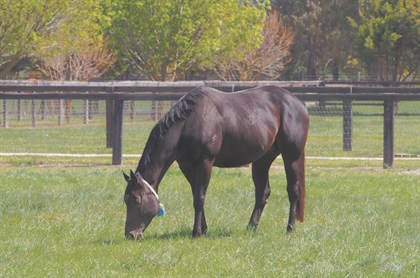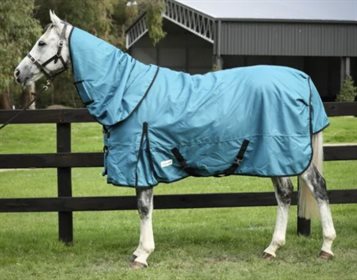VETERINARIAN
BY ROSIE MERRIN
I’m always on the lookout for symptoms of snakebite in our dogs, but until recently it hadn’t occurred to me to be alert when it comes to our horses as well.
SNAKEBITE
IN HORSES
Every year, my enjoyment of the warmer months is tempered by just one thing. Daily pleasures such as a walk across the paddocks with the dogs, picking vegetables from the garden, or feeding the chooks are slightly compromised by the ever-present possibility of encountering a snake.
Not long ago I caught my son’s pony Mounty with the intention of having her saddled and ready to ride when he came home from school. Thank goodness I did, because I doubt I would have noticed the very slight tremor in her front legs had she been left undisturbed in the paddock. I must stress that the tremor was very slight – enough to have me curious, but not particularly alarmed. But within half an hour, the tremor had become much more pronounced and Mounty was increasingly restless. She was able to graze, but kept moving from side to side and picking up her hooves as though she was standing on hot coals.
It was at this point that I called the vet, who immediately suggested snakebite as a possibility and advised us to get Mounty into the clinic as soon as possible. That we did, and by the time she had undertaken the 40-minute trip into town, the entire horse float was shuddering from Mounty’s violent trembling inside. She collapsed as she came off the float, but mercifully responded immediately to a life-saving dose of antivenom – or antivenin as it is sometimes known – delivered by the team of vets waiting at the clinic.
Afterwards I caught up with Dr Kathryn Robertson, of Cox Street Vets in Hamilton, Victoria, who told me more about symptoms and treatment of snakebite in horses.
“Horses are not commonly diagnosed with snake envenomation as they have thick skin and their hooves are better than gumboots,” she said. “However, during the warmer months if any animal is behaving abnormally we always have snakebite at the back of our minds.”
Dr Robertson said there is a wide variation in how animals present with snakebite, because the symptoms depend on the dose injected, the type of snake, where they were bitten and the individual animal. “Typically in horses you see muscle tremors that progressively get worse until eventually the horse collapses,” she said. “They may become agitated and constantly shift their weight from hoof to hoof. Usually they are very sweaty. Horses may look a bit like they are colicky or they may bleed more than expected, for example, from an injection site. The black part of their eyes, the pupils, may become large and will not get smaller if you shine a bright light into their eye.”
If a horse is diagnosed with snakebite then treatment with antivenom is the best course of action. “They often require multiple vials of antivenom, however the exact number varies and ultimately depends on how much venom is injected by the snake, not the size of the horse.”
If you suspect snakebite, call your local vet as soon as possible for further advice. Dr Robertson says it is important to keep your horse as calm as possible, as the more anxious they become the quicker the toxins travel through their system. “Depending on the situation and your local facilities, your vet may recommend you transport your horse to the clinic,” she says. “This is a case-by-case basis and is assessed by your vet to help ensure the best outcome for your horse.”
READ THE LATEST NEWS ARTICLES HERE









